Since this has been a hot topic lately, and I just happened to be smoking about 14 pounds of the stuff for Christmas presents and general snacking, I thought I'd share my method.
Ambient temperatures were already pretty low, so I just went with an empty water pan topped with a foiled clay saucer. In warmer months, I will use a waterpan full of cold water or even icewater to keep the temperature below 100* F inside the WSM. This is essential, as once you approach 100* the cheese will start to get a sheen of grease on the outside which is an indicator that it's about to melt. This is a very general rule of thumb; harder cheeses tend to have a higher melting point than softer cheeses.
Here are 3 coals lighting in my Ikea mini-starter.
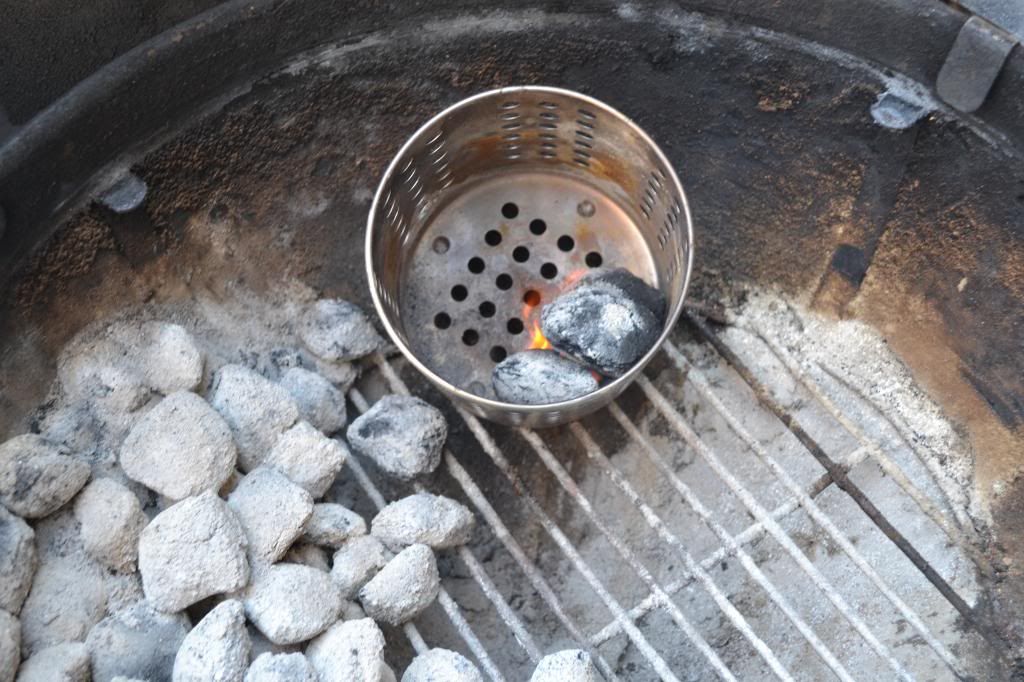
The coals go inside this V of firebricks, which not only helps keep the small number of coals contained and going but also insulates heat. I used chips instead of chunks to keep the temperature down and the volume of smoke up, and added a few used but unlit coals to the pile to keep the fire going.

An army of cheeses in the WSM. I tend to put harder cheeses on top, softer cheeses closer to the waterpan. Since I have so much cheese on the grill this time, I've used a set of charcoal rails to elevate the grate from my kettle and put more cheese on top.

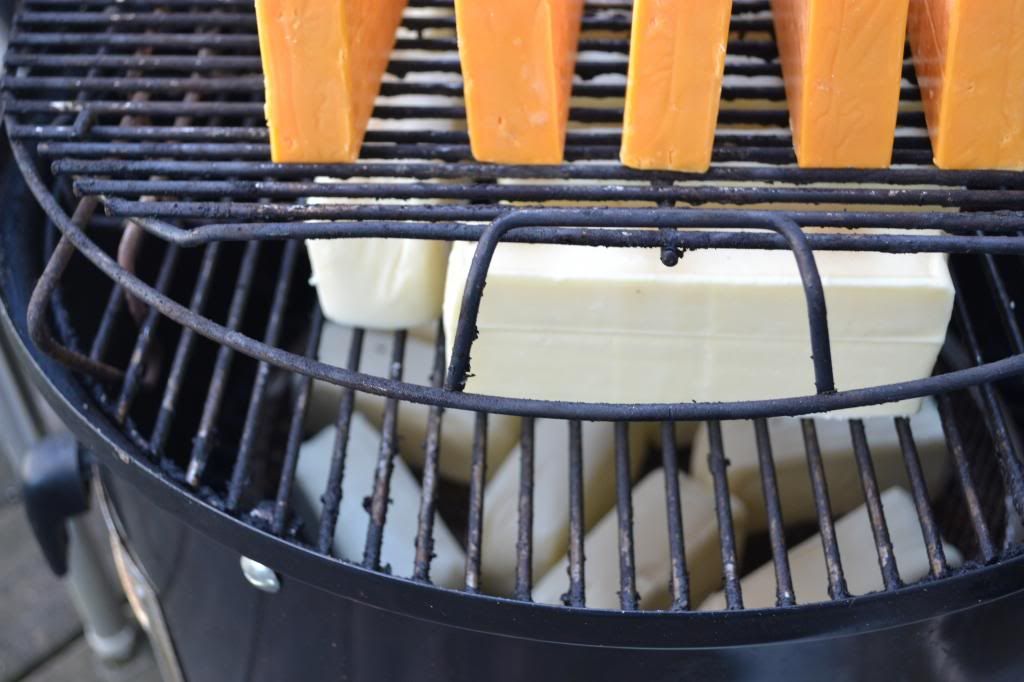
Erin got me an iGrill as an early Christmas present, and this thing was great for keeping me from running out to frantically check temps every few minutes. I set an alarm for 95* but never got close.
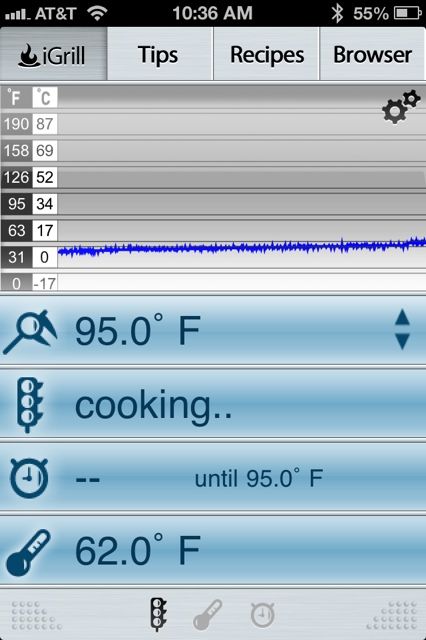
Cheese done. Total smoking time was about 2 hours. Pepperjack and cheddar on the bottom, mozzarella on top, and a few other varieties not pictured. Yes, I got some messy bits from my kettle grate on the cheese that was below. It brushes off when everything is cold.
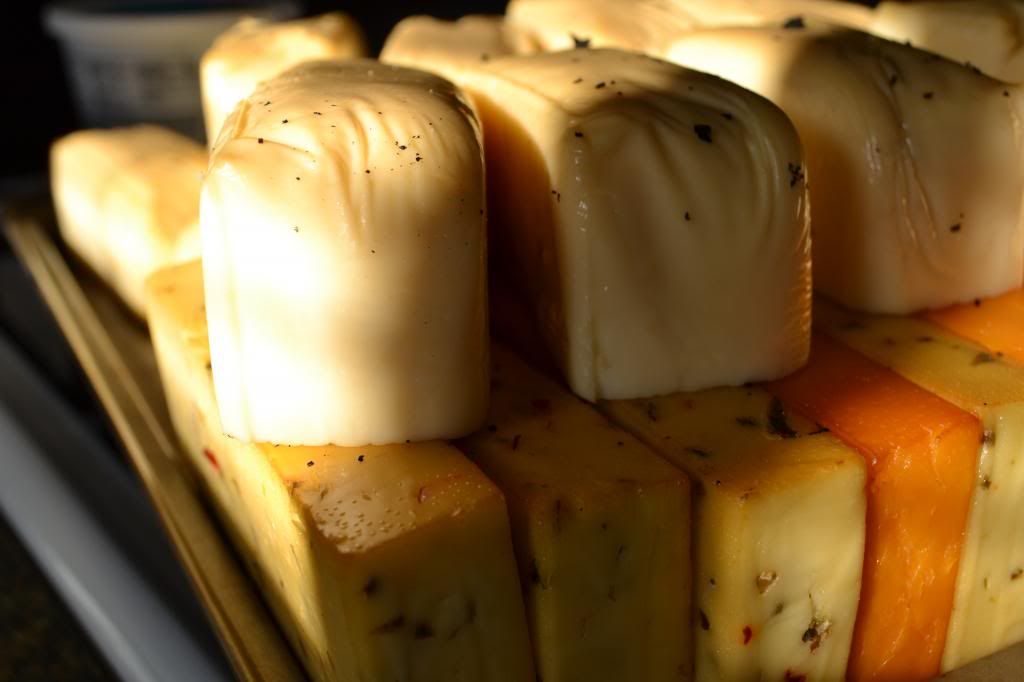
And packed up.
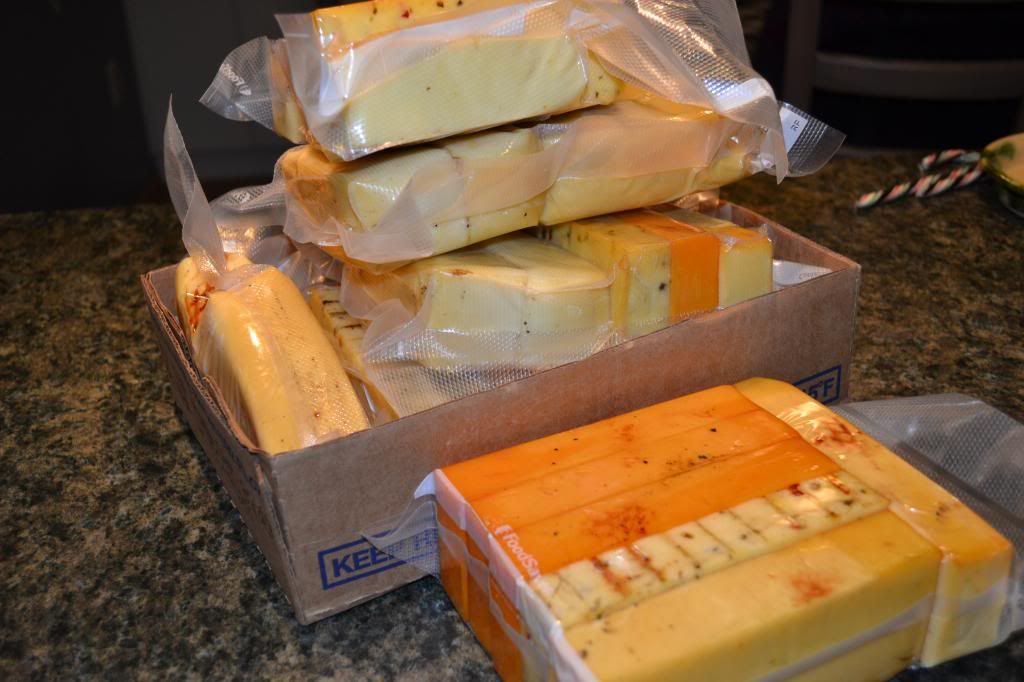
In summary:
Thanks for looking!
Ambient temperatures were already pretty low, so I just went with an empty water pan topped with a foiled clay saucer. In warmer months, I will use a waterpan full of cold water or even icewater to keep the temperature below 100* F inside the WSM. This is essential, as once you approach 100* the cheese will start to get a sheen of grease on the outside which is an indicator that it's about to melt. This is a very general rule of thumb; harder cheeses tend to have a higher melting point than softer cheeses.
Here are 3 coals lighting in my Ikea mini-starter.

The coals go inside this V of firebricks, which not only helps keep the small number of coals contained and going but also insulates heat. I used chips instead of chunks to keep the temperature down and the volume of smoke up, and added a few used but unlit coals to the pile to keep the fire going.

An army of cheeses in the WSM. I tend to put harder cheeses on top, softer cheeses closer to the waterpan. Since I have so much cheese on the grill this time, I've used a set of charcoal rails to elevate the grate from my kettle and put more cheese on top.


Erin got me an iGrill as an early Christmas present, and this thing was great for keeping me from running out to frantically check temps every few minutes. I set an alarm for 95* but never got close.

Cheese done. Total smoking time was about 2 hours. Pepperjack and cheddar on the bottom, mozzarella on top, and a few other varieties not pictured. Yes, I got some messy bits from my kettle grate on the cheese that was below. It brushes off when everything is cold.

And packed up.

In summary:
- Don't melt the cheese. Keep the temperature as low as possible, preferably well under 100.
- Don't eat the cheese for at least one week after smoking or it will taste like the inside of your ashcatcher.
Thanks for looking!
